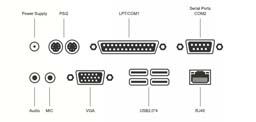How to Selecting The Motherboard Configuration For POS Systems
Nov 30, 2023The motherboard serves as the central hub, connecting various hardware components and ensuring seamless communication. Choosing the right motherboard configuration is paramount to the overall performance, reliability, and longevity of the POS system. In this guide, we'll explore key considerations for selecting the most suitable motherboard for your POS setup.
Compatibility with POS Software: Before delving into technical specifications, it's essential to ensure that the motherboard is compatible with the POS software you intend to use. Check the software's system requirements and recommendations to guarantee a smooth integration.


Form Factor: Android POS All In One often have limited space, so selecting the appropriate form factor is crucial. Common form factors include ATX, Micro-ATX, and Mini-ITX. Choose a form factor that fits within the dimensions of your POS terminal while allowing for proper ventilation.
Processor Compatibility: The processor (CPU) is the brain of the Electronic Cash Register Hardware, and the motherboard must support the chosen CPU. Consider factors such as processing power, energy efficiency, and compatibility with your POS software. Intel and AMD are the major players in the CPU market, offering a range of options suitable for POS applications.

RAM (Memory) Capacity and Type: Adequate RAM is essential for smooth Touch Screen POS operations, especially in high-traffic environments. Choose a motherboard that supports sufficient RAM capacity and the right type (e.g., DDR4). Consider future scalability to accommodate potential software upgrades.
Expansion Slots and Ports: Assess the number and type of expansion slots and ports on the motherboard. This includes USB ports, serial ports, Ethernet ports, and PCIe slots. Ensure there are enough ports to connect peripherals.
